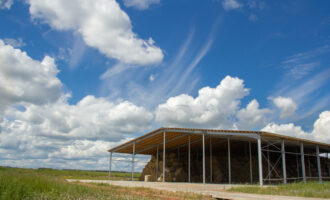Are you building a new home? Daniel May, VAT Manager explores the DIY housebuilders scheme and shares important details so that you don’t miss out on possible refunds.
The DIY scheme was introduced by HMRC to put a person building their own house in the same (*well actually, similar) position to if they purchased it from a builder/property developer. In that instance, the supplier would charge the zero-rate, so the scheme is designed to refund VAT incurred on the purchase of goods and services incurred in the course of construction.
As well as new builds, a claim can also be made where a non-residential building is converted to residential (such as a barn conversion), because a developer selling you a completed conversion would charge you zero-rate, whereas a builder will charge you 5% for most services in the course of conversion.
So, add up all the VAT incurred, tell HMRC, and wait for the cheque to arrive, right? If only it was that simple!
Does build qualify?
Only in the VAT world is a house sometimes not a house! But whether we are in fact building a ‘house’ is the first question we must ask when considering a DIY claim.
To qualify for a refund of VAT, the property must not be used for business purposes (residential or for personal holiday use is fine) and must satisfy ‘the dwelling conditions’.
The first few conditions are relatively simple, the building must contain all the essential means for living that you’d expect (somewhere to eat, sleep and wash) and must not contain internal access from one house to another house.
The tricky part which excludes some buildings is the condition that the property must be capable of separate use and disposal. Broadly, this means that the property must not be tied to any land upon disposal (for example, a property built on a farm must be capable of being sold without selling the whole of the farm), and that the property must not be subject to an occupational (or similar) restriction (for example, if the property may only be occupied by a person working in agriculture in the local area).
A thorough review of the planning consent will be required to ensure no such clauses are present.
If the dwelling conditions are not met, the build will not qualify for a DIY refund. In addition, VAT on services which would otherwise be zero or reduced rated are likely to be charged at the standard rate.
Time limit to make a claim
The next condition which has caught many people out in the past is that a claim must be made within 3 months of completion of the building. The 2023 Budget proposed extending this limit to six months, but no implementation date was given for this change.
HMRC used to rule that a building was complete once it was habitable. However, there have been several tribunal cases challenging this view.
Generally, a building will be deemed complete when the local planning authority issues a completion certificate, but it is always worth checking the status, particularly if the building will be lived in whilst it is being completed and a claim is planned after 3 months.
Building materials
Above* it is stated that the DIY scheme only puts the applicant in a similar position as a regular builder. The reason for this is there are many restrictions over what is claimable under the scheme. Claims are notoriously scrutinised to the penny by HMRC, so it is important only eligible expenditure is included to avoid potential penalties for incorrect claims.
Only input VAT incurred on goods considered ‘building materials incorporated into the building’ will be refundable. Many items such as certain types of flooring or electrical mechanisms on garage doors or similar, which appear to meet the requirements, do not. There are also common mistakes made with the purchase of carpets, furniture, white goods and other electrical items, bathroom and vanity units etc.
Other than non-building materials, input VAT which is not allowable under the scheme includes that incurred on; professional fees, hire of machinery, purchase of tools and other consumables etc.
The VAT reclaimed must also be ‘properly charged’. By this we mean where services of installation are supplied along with goods, the VAT should be charged at the zero rate for new builds, or reduced rate for conversions. Many builders charge VAT ‘to be on the safe side’ but HMRC will not refund it and the only recourse is to seek a refund from the builder, which can be fun.
Claim process and administration
A claim must be made on the correct HMRC forms, which in themselves can be complicated. A claim must be made via post and accompanied by various forms of information and evidence including, planning permission, structural plans, copies of all itemised invoices etc.
The 2023 Budget also proposed making the application process available online which would be a welcome change. But again, no timescale was given for this change.
If you would like to discuss the VAT DIY housebuilders scheme or any other VAT property/construction matter please call Daniel on 0330 058 6559 or email hello@scruttonbland.co.uk







